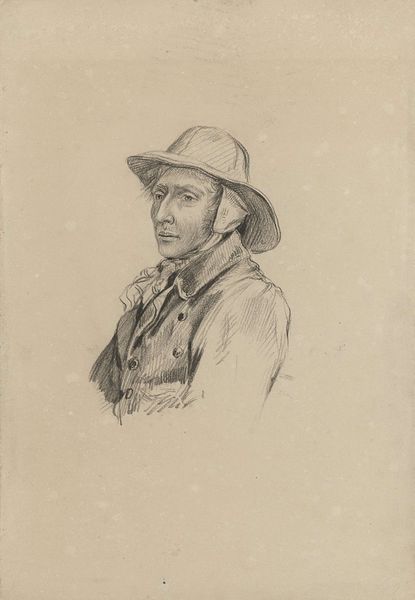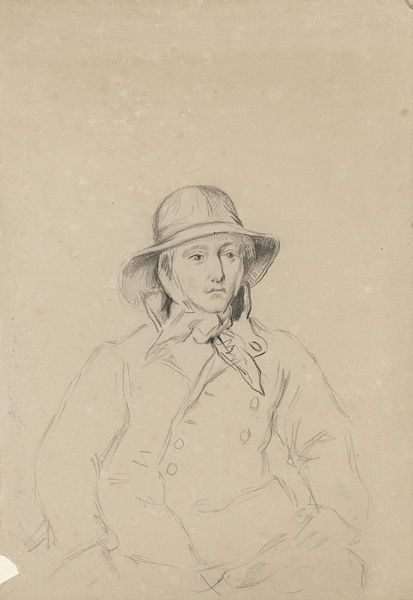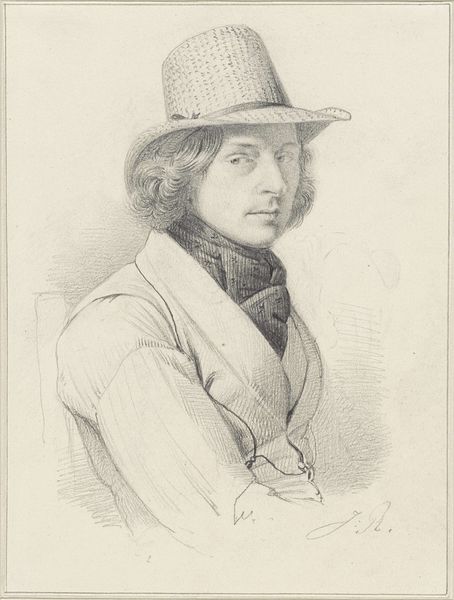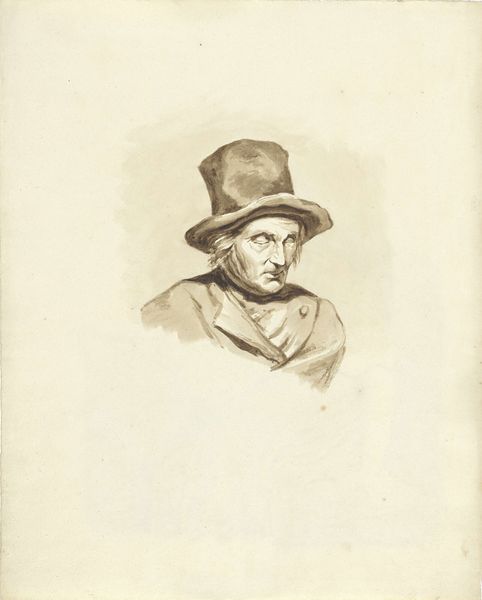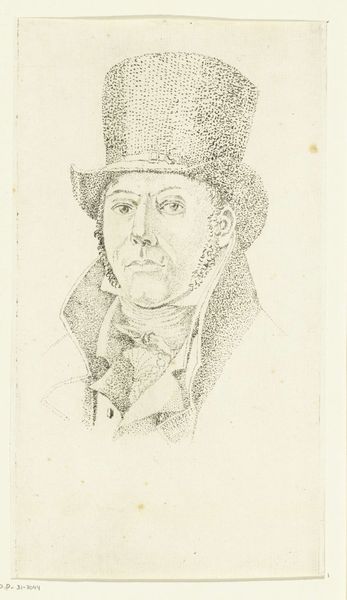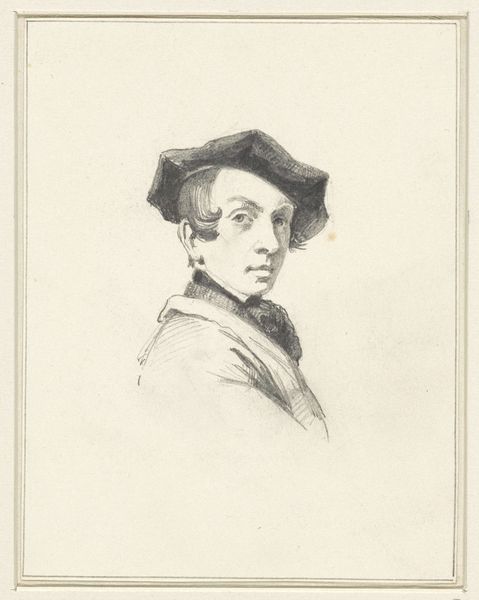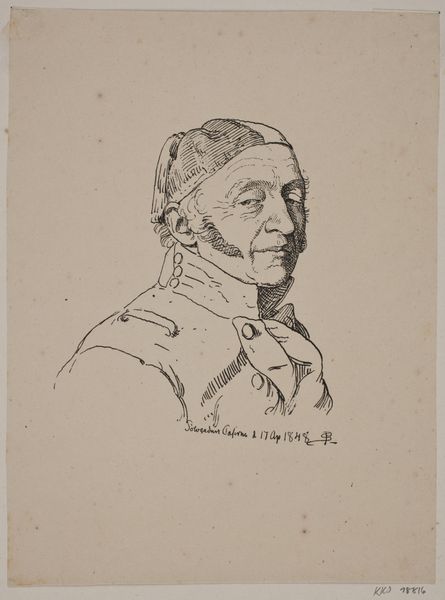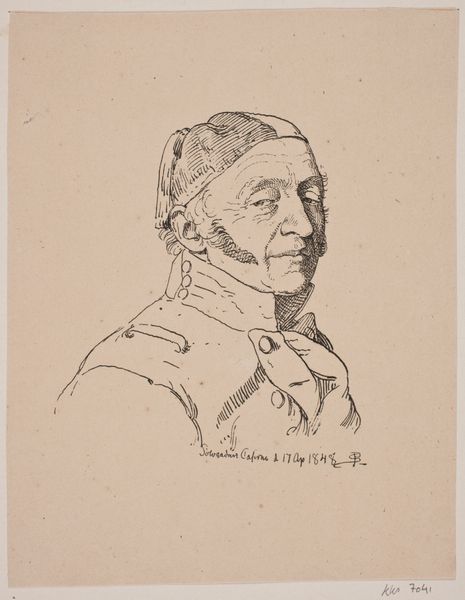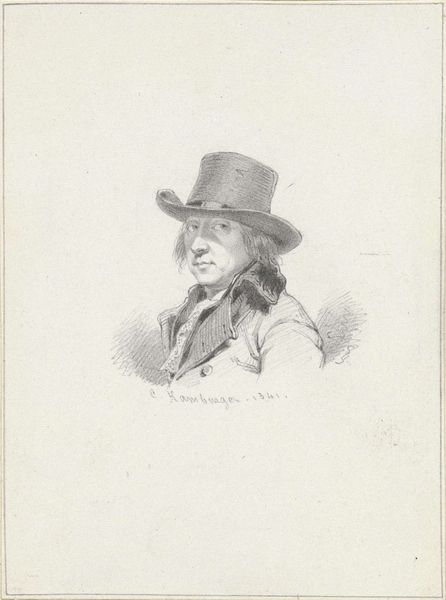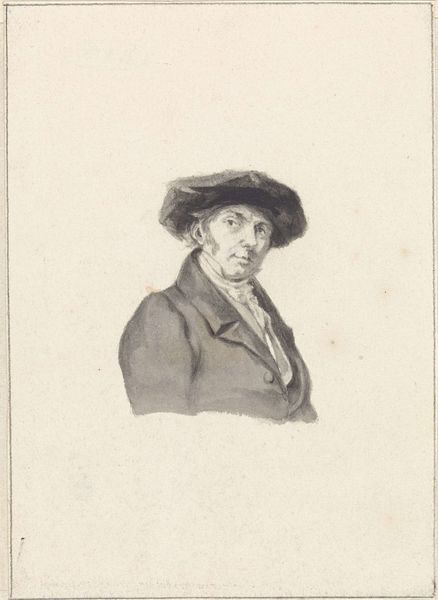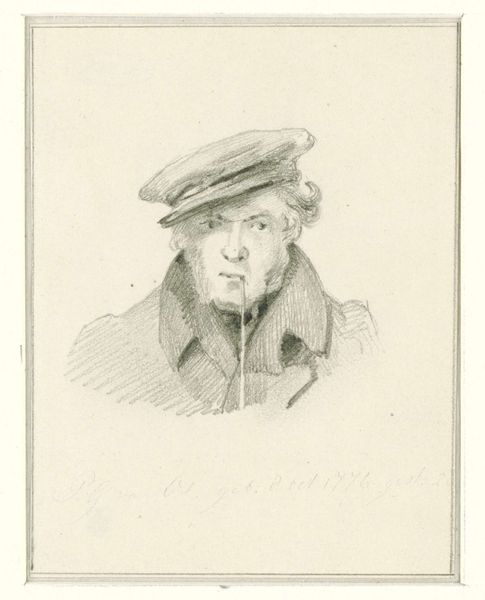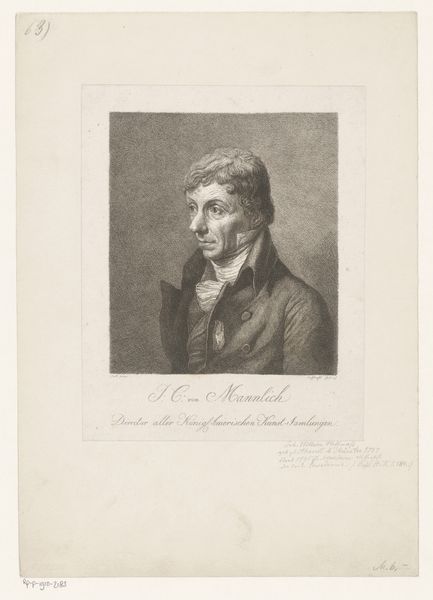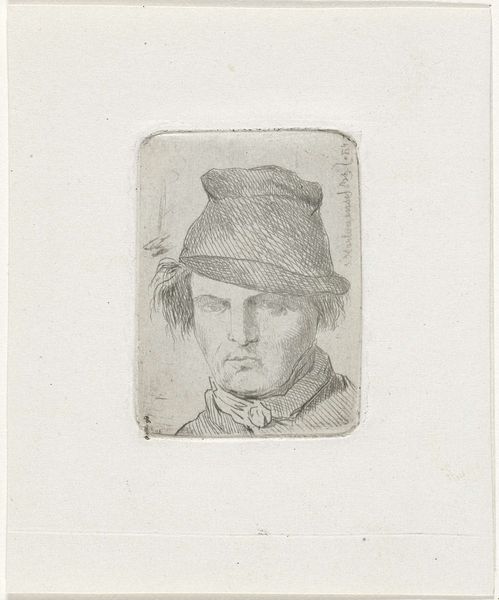
drawing, pencil
#
portrait
#
pencil drawn
#
drawing
#
amateur sketch
#
toned paper
#
light pencil work
#
pencil sketch
#
personal sketchbook
#
pencil drawing
#
pencil
#
sketchbook drawing
#
pencil work
#
academic-art
#
sketchbook art
#
realism
Dimensions: height 325 mm, width 242 mm
Copyright: Rijks Museum: Open Domain
Editor: So, here we have an interesting work titled "Portret van een zoon van Klaas Bording," a pencil drawing from 1849 housed in the Rijksmuseum. It strikes me as very intimate, almost like a snapshot from a personal sketchbook. What catches your eye in this portrait? Curator: What interests me most is the raw, unfiltered glimpse into the material conditions of art-making it offers. The use of pencil, the likely readily available paper, suggests a certain accessibility and immediacy, different from oil paintings, of the wealthy patrons. Editor: That's a good point! I hadn't thought about the socioeconomic implications of the materials used. Does the choice of materials alter your perception of its artistic value? Curator: Absolutely. It moves us to question traditional hierarchies within art. Is a quick pencil sketch of less "value" than a commissioned portrait? The materiality pushes us to consider the labor involved, the act of observation, the skill in translating form with simple means. And who was Klaas Bording and his family? Their social standing would impact the availability of materials like paper and the very act of creating or sitting for a portrait. Editor: It’s fascinating to consider this in relation to art history generally. Curator: Precisely. Think of how the industrial revolution would eventually make paper and pencils more widely accessible, impacting artistic practice across social strata. This simple sketch anticipates those changes. It offers us insight into the changing economy around artistic labor. Editor: It’s really changed my thinking about looking at sketches. Curator: Exactly. Looking closely reveals so much more than just the face in the picture, from considering materials to a specific class background. Editor: This really provides an avenue for thinking more critically about the artwork. Curator: The pencil line speaks volumes, not just of artistry, but about the world surrounding its production and consumption.
Comments
No comments
Be the first to comment and join the conversation on the ultimate creative platform.
